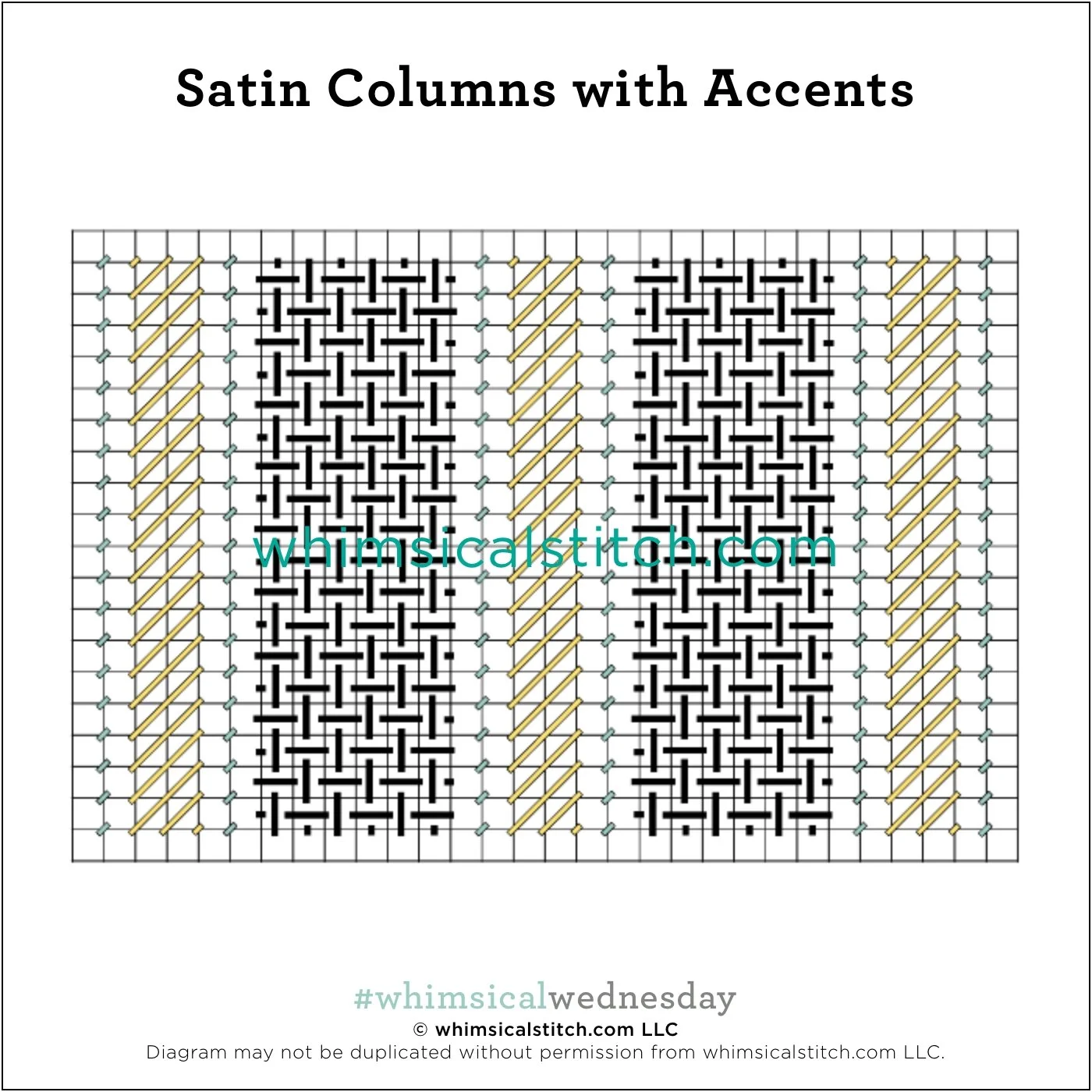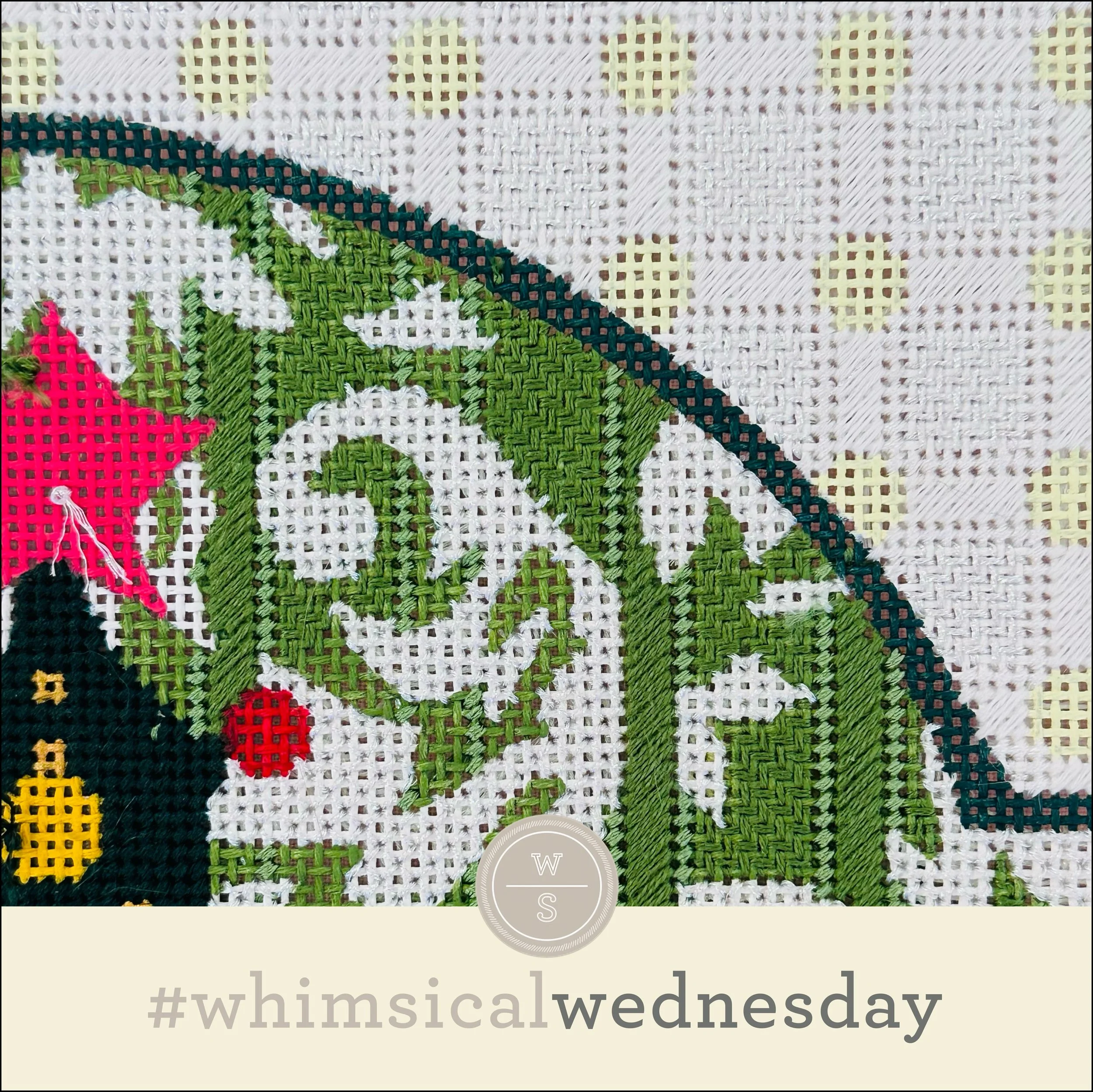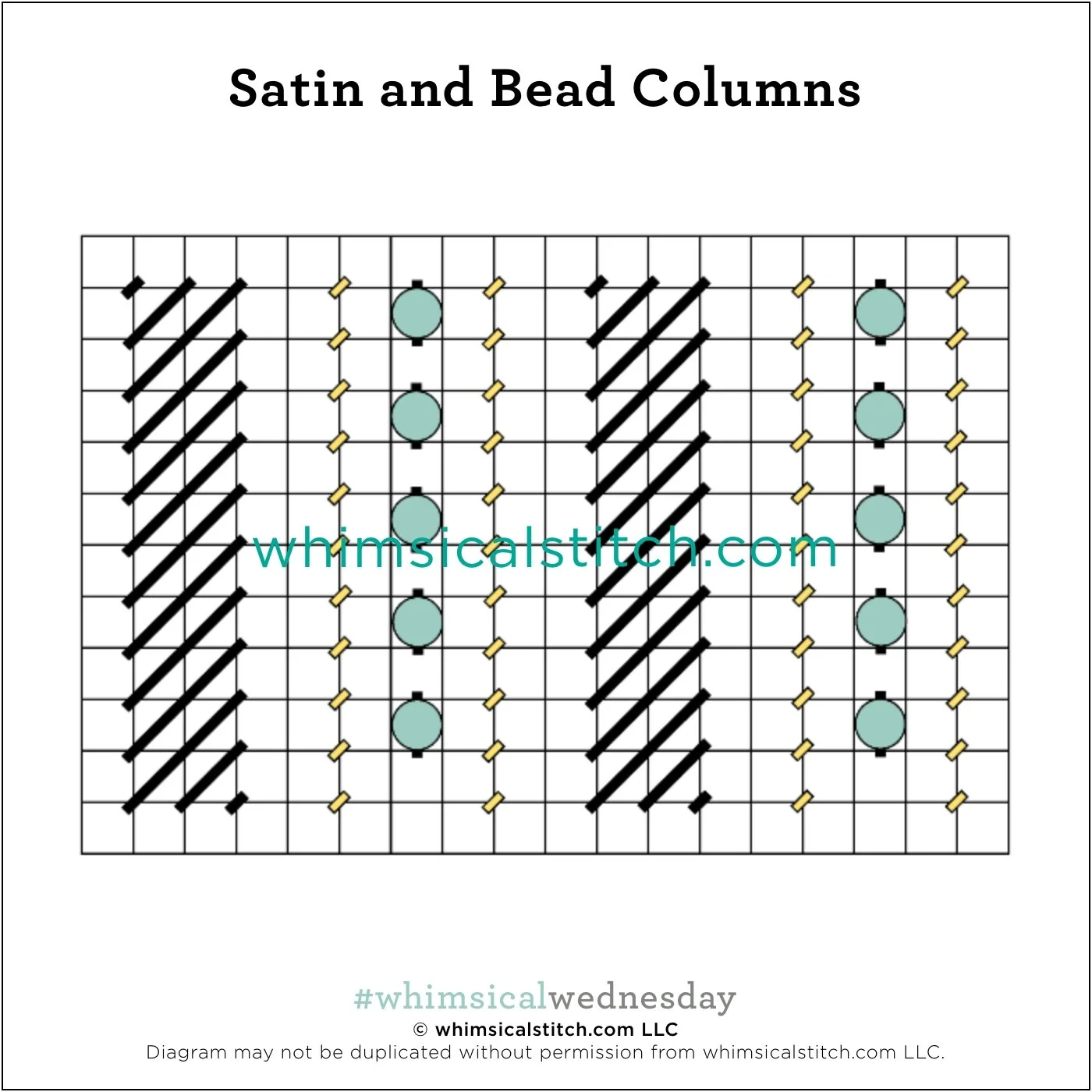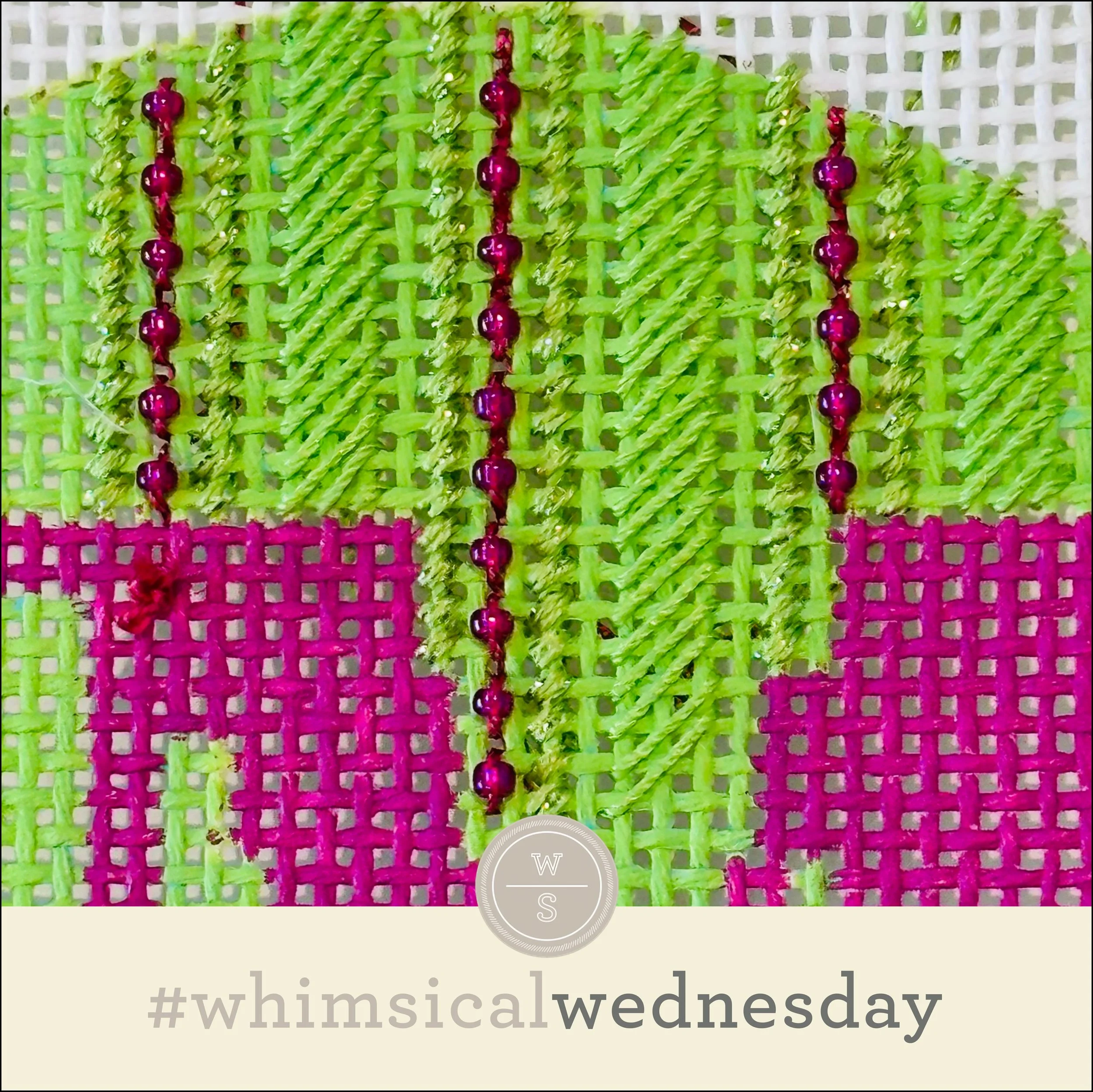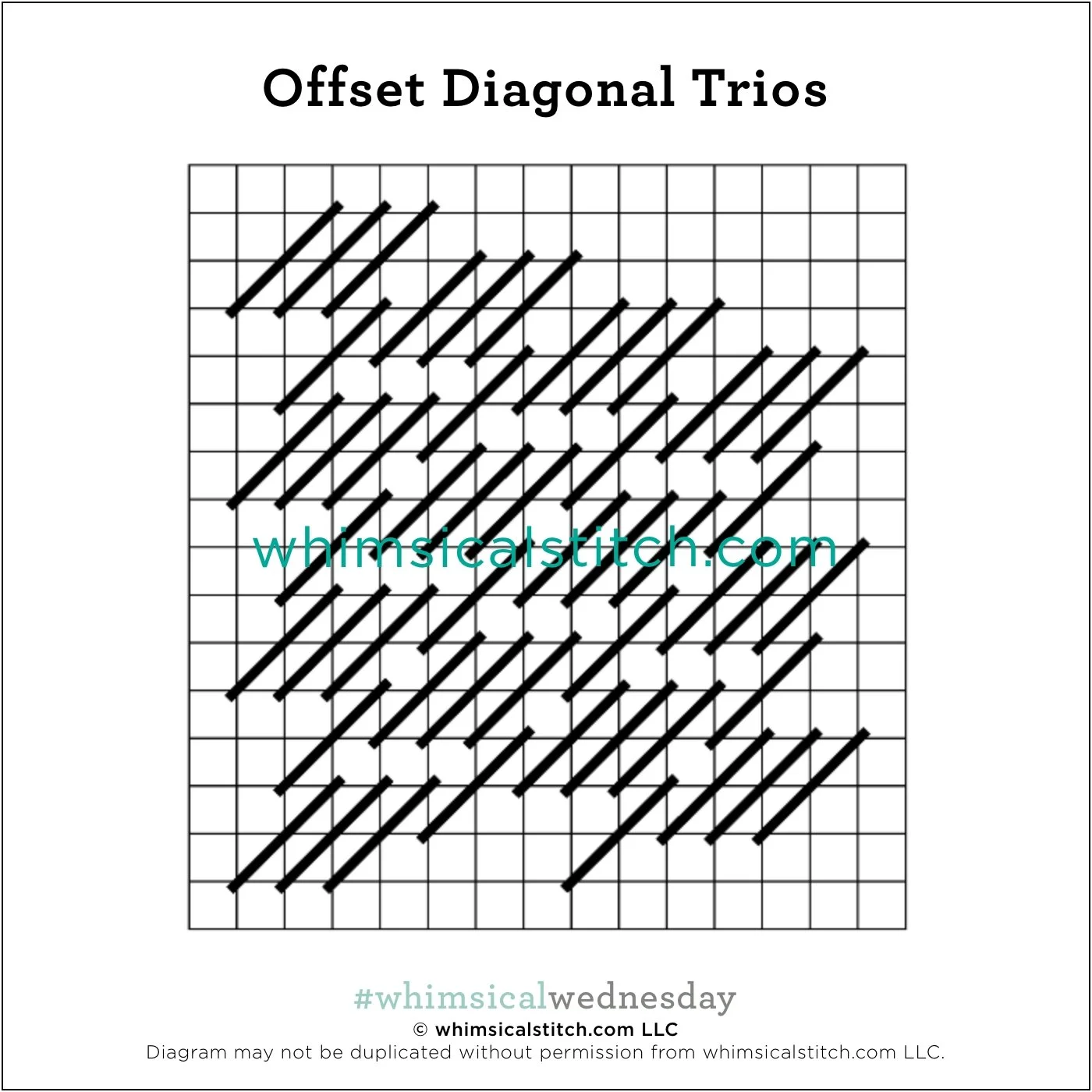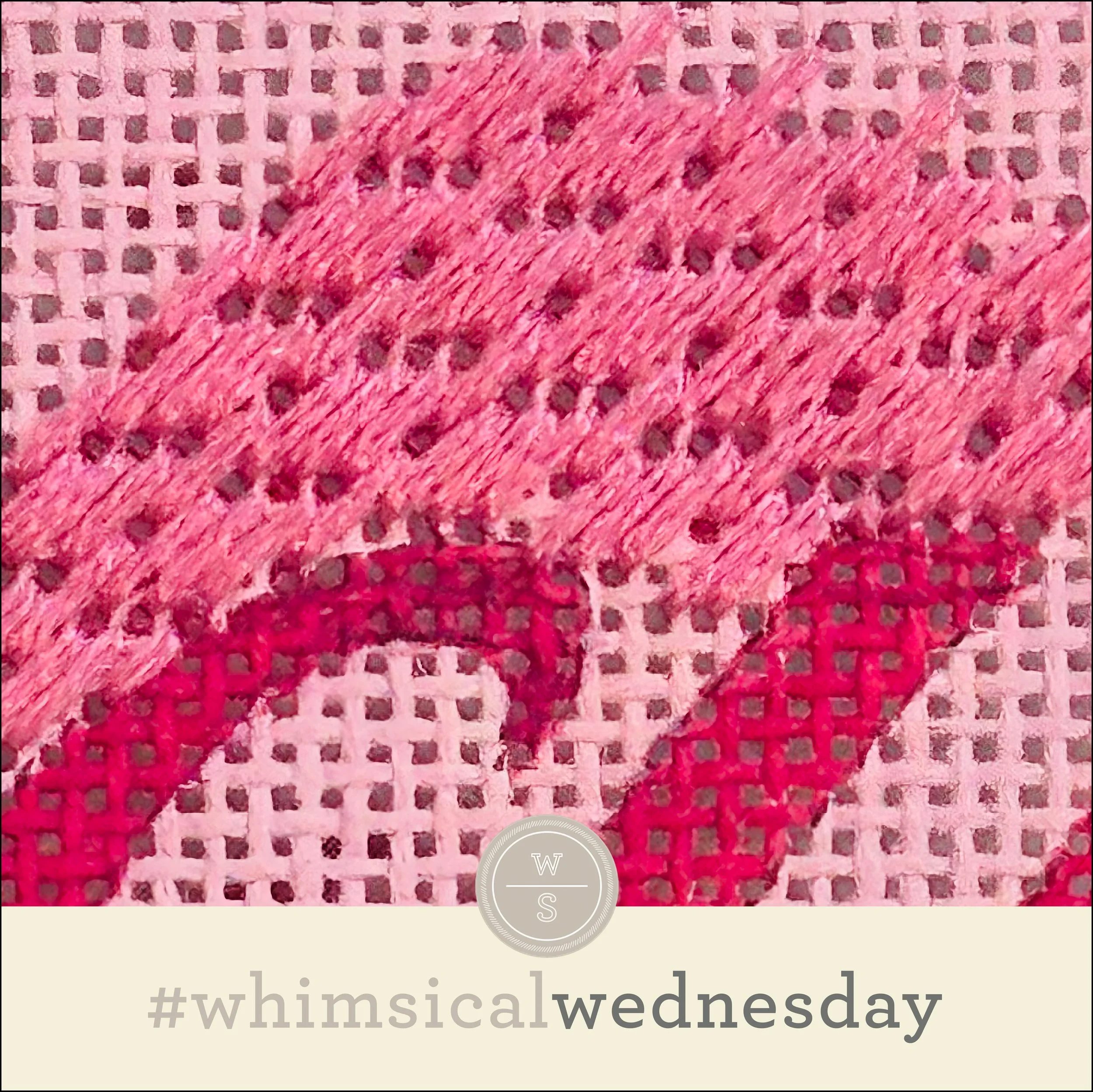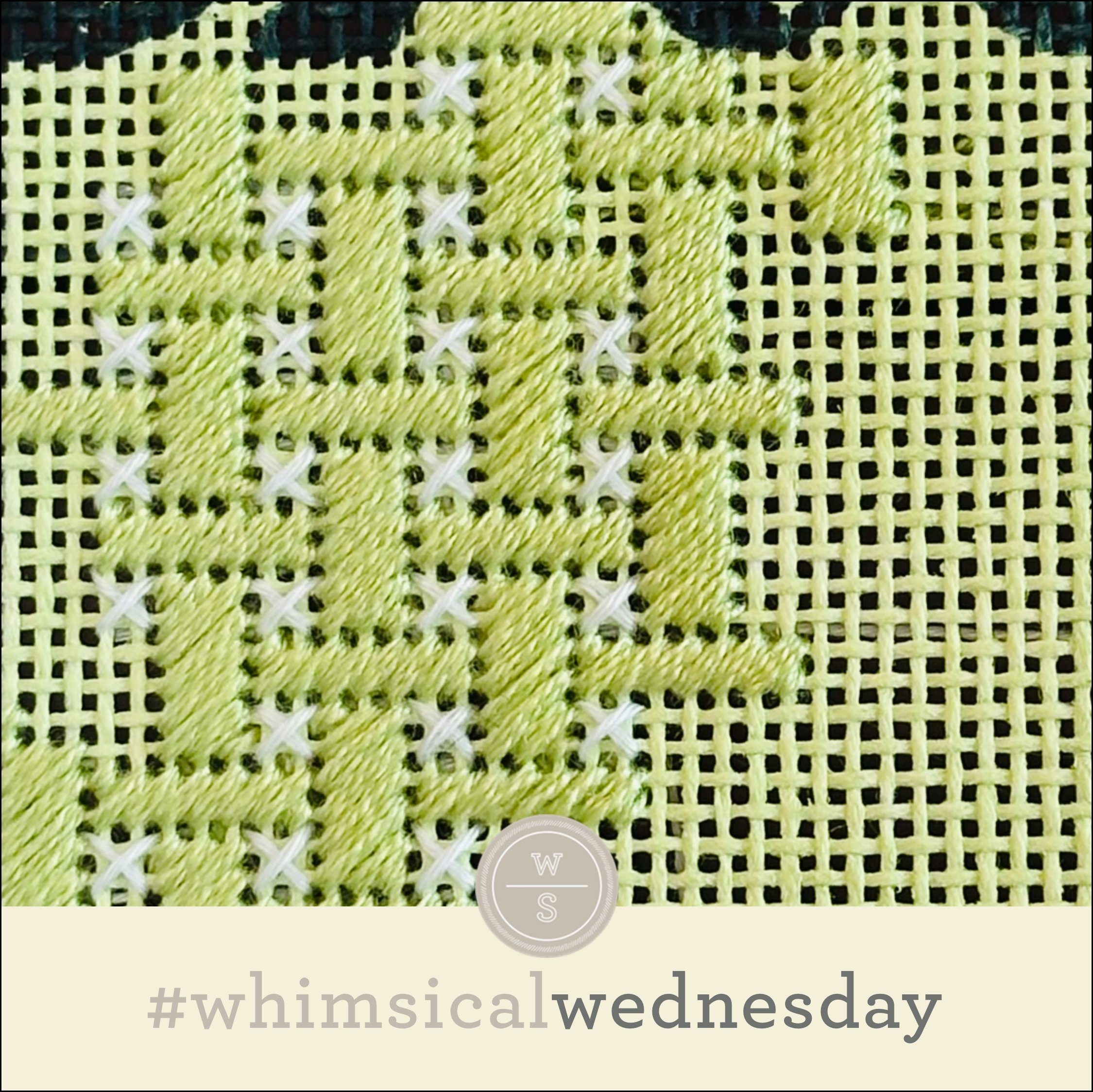I learned today’s technique a long time ago when I was taking classes from Beverly Churchfield at Aristeia. It may be almost 30 years later, yet it is still a keeper.
Bev taught me to carry a portion of a stitch in a stocking cuff to the background of the body of the stocking. I loved this idea then, and I love it even more now.
Remember this recent stitch? Today’s stitch picks up the vertical columns, the single row edges on either side, and the reverse basketweave in the center.
I used three plies of Soie D'Alger (yellow lines), two plies of the same Soie D'Alger (black lines), and Neon Rays (aqua lines) on 13M. I was pleased with the surprisingly full coverage of the three plies for the yellow lines. I used three plies because I wanted full coverage but I wanted the green area to remain in the background and not drown out the white areas and, later down the road, the tree.
While this is a trick I usually pull out for customers’ stockings, you could switch the order. Use the stitch for the white area for a tabletop and today’s background stitch for the wall above the table.
I hope you have the perfect spot for this stitch. Enjoy!
As you are auditioning stitches (from any stitch source), count the number of canvas threads on the diagram that match your mesh size. And there you have what an inch of the stitch will look like. Evaluate that against the area where you plan to use the stitch and make your final decision. If you start integrating this step into your stitch selection process, you may be surprised at how many stitches you think are large are much smaller than you realize.
By (sometimes) including this step in my own process, I find I am now integrating much longer stitches than I ever thought I would. I used to think a stitch six rows long was super big. I have very much changed my tune, which has helped me expand my creativity, especially for large-space stitches.
Today’s stitch diagram, along with all other #whimsicalwednesday and #smallspacesunday stitch diagrams, can also be found on a Pinterest board here. Be sure to follow whimsicalstitch.com on Facebook, Pinterest, Instagram, and Twitter.
If you like what you see on this blog, there's more. Mary’s Whimsical Stitches is a series of four books offering contemporary how-to collections of more than 200 stitches (in each volume) for all stitchers, regardless of skill level. All books include updated and sequenced diagrams from this blog, plus a collection of all-new stitches from private lessons and other class projects. Visit here to find a needlepoint retailer that carries my books.
New to needlepoint or looking for a refresher? Please download a handy how-to guide covering basic needlepoint stitches and stitch compensation techniques along with new top-line information on needlepoint materials and tools, how to handle threads, and other helpful needlepoint resources.
whimsicalstitch.com also sells Stitch Guides and Stitch Concepts for Melissa Shirley Designs, Zecca Designs, Sandra Gilmore, Purple Palm, Maggie, and Penny MacLeod, and many more. Click here to see the newest guides and click here to see the entire collection.
I hope you have the perfect spot for this stitch! Please enjoy! Have a wonderful #whimsicalwednesday!
A Note about Diagrams
I use color in diagrams to make them as clear as possible. The primary function of different colored lines is to illustrate a stitch sequence. For example, the layering of colors demonstrates you add them in that order. They can also provide ideas on integrating additional threads (one line for each color). Or, you can use the same thread for all color lines. That's where I encourage you to use your imagination for the space you are stitching!


